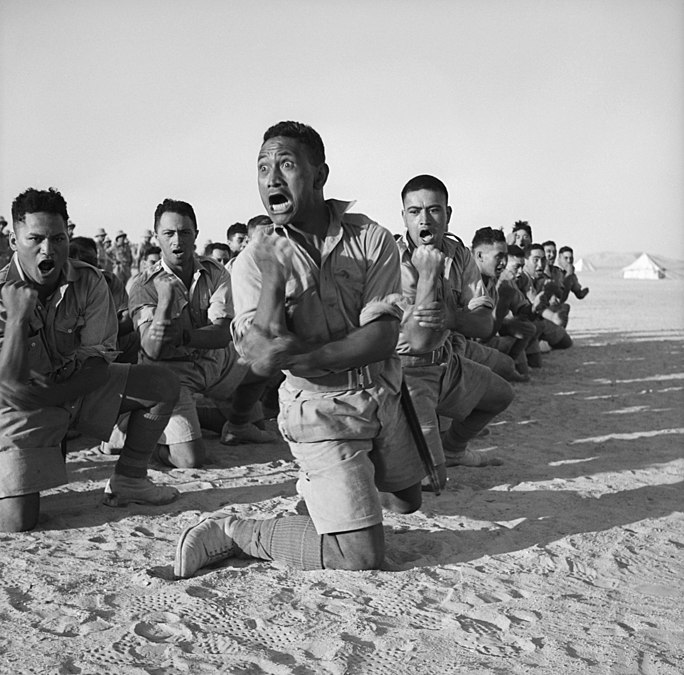|
New featured articles |

- 70th Infantry Division (United Kingdom) (EnigmaMcmxc)
- Part of a series of articles that Enigma has been writing on British infantry divisions of the Second World War, this looks at the 70th, which fought during the Western Desert Campaign, forming part of the Tobruk garrison during the siege after the Australians were withdrawn to the Pacific. The division later took part in the Allied breakout from the port during Operation Crusader before being transferred to India. There, the division formed a reserve to counter possible Japanese landings while it trained in jungle warfare. It also served as a police force, protecting railways and being used to suppress civil disobedience caused by the Quit India Movement. It was later transferred to the Chindits. The article passed GAN and ACR before FAC.
- Baron Munchausen (Lemuellio)
- As Lemuellio put it in the nomination statement: "Behold the Baron! The brainchild of an 18th-century con artist who fled his country with a price on his head, the unbelievable Baron Munchausen flourished as an international pop-culture hero from the 1780s onward ... much to the frustration of the real-life nobleman who inspired the character in the first place." Special congratulations to Lemuellio for this, their first FA!
New featured pictures |
New A-Class articles |


- 2/17th Battalion (Australia) (AustralianRupert)
- This is the first of three articles on Australian battalions of World War II developed by AustralianRupert on this month's list. The 2/17th Battalion was raised from volunteers from New South Wales and spent most of the war as part of the 9th Division. It saw combat against German and Italian forces in North Africa during 1941 and 1942, and Japanese forces in New Guinea and Borneo from 1943 until 1945.
- Pećanac Chetniks (Peacemaker67)
- Peacemaker's first entry on this month's list is an article about a collaborationist irregular force in the German-occupied territory of Serbia during 1941–1943. The Pećanac Chetniks were loyal to their commander Kosta Pećanac (the subject of one of Peacemaker's first FAs), but were eventually dissolved by the Germans and their puppet government for being "inefficient, unreliable, and of little military aid".
- Nike-X (Maury Markowitz)
- The Nike-X was a US Army Cold War-era anti-ballistic missile system. Although technologically sophisticated, it was unable to stop Soviet missile attacks and US defense officials were concerned about its very high costs. In his nomination statement Maury noted that the problems with the Nike-X "illustrates the underlying problems with the entire ABM concept".
- 27th Infantry Division Savska (Peacemaker67)
- Peacemaker's second entry covers an ill-fated Yugoslav division of World War II which mainly comprised Croat troops. The division is described as being "a very large and unwieldy formation", and many of the Croat personnel mutinied and seized a city following the German invasion in April 1941. The remainder of the division collapsed, and eventually surrendered to German forces.
- 2/5th Battalion (Australia) (AustralianRupert)
- A Christmas holiday project for the article's nominator which saw the article promoted to GA and then A-class throughout January and February, this article is about the second of only two Australian infantry battalions that fought against all the major Axis powers during World War II. Part of the Australian 6th Division, the 2/5th served in North Africa, Greece, Crete, Syria, Ceylon, and New Guinea during the war, seeing action against the Italians, Germans, Vichy French and Japanese.
- 2/48th Battalion (Australia) (AustralianRupert)
- The 2/48th Battalion is considered Australia's most highly decorated unit of World War II. Like the 2/17th, it saw extensive fighting in North Africa, New Guinea and Borneo with its members earning four Victoria Cross medals and many other awards. This came at a high cost, with with battalion suffering around 1,000 casualties during the war. AustralianRupert developed the article to GA status five years ago, and further improved it to A-class after consulting other sources.
- Henry Hoʻolulu Pitman (KAVEBEAR)
- KAVEBEAR's first A-class article covers one of a small group of American Civil War soldiers of Hawaiian descent. Pitman was born in Hawaiʻi and moved to Boston with his father in 1860. Despite his mixed-race ancestry, Pitman avoided the racial segregation in the Union Army, and enlisted in 1862. He became a prisoner of war late that year, and died of disease in Confederate custody.
|


